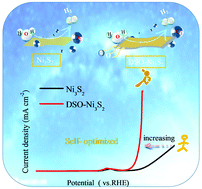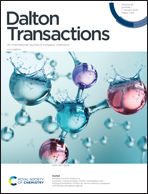In situ fabrication of dynamic self-optimizing Ni3S2 nanosheets as an efficient catalyst for the oxygen evolution reaction†
Abstract
In this work, a dynamic self-optimizing material consisting of nickel–sulfide nanosheets anchored onto Ni foam (DSO-Ni3S2-NF) as the model material was constructed using a hydrothermal method, and its electrocatalytic performance for oxygen evolution was evaluated. It was found that the electrocatalytic activity of the dynamic self-optimizing (DSO) 25 h-Ni3S2-NF for oxygen evolution is significantly enhanced compared with that of pristine 0 h-Ni3S2-NF since the formed oxide layer evolves into new active sites and the specific process of activity optimization was explored dynamically. The best oxygen evolution reaction (OER) performance was achieved by 25 h-Ni3S2-NF catalyst, which required merely 241 mV overpotential to deliver a current density of 20 mA cm−2, and its Tafel slope was as low as ∼40 mV dec−1, which was superior to most nickel-based catalysts, in 1 M KOH electrolyte. The current density was found to be increased gradually at the same potential and the stability test curves were steady with ignorable decline, showing that the promising strategy of the preparation of a dynamic self-optimizing pre-catalyst may open a new pathway to prepare low-cost, high-performance and stable water splitting catalysts.



 Please wait while we load your content...
Please wait while we load your content...